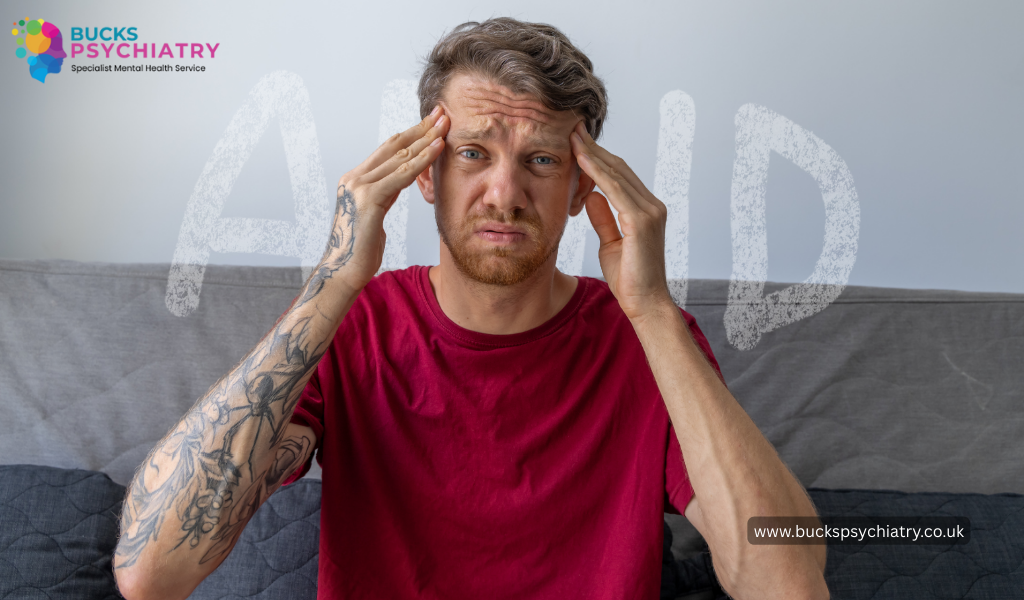Most people think of ADHD as something children have — the child who can’t sit still in class or who’s always blurting out answers. But ADHD doesn’t vanish when you grow up. For many, it sticks around and shapes how they live, work, and relate to others. The signs might not be as obvious as in childhood, but they’re still there.
Here’s the thing: ADHD isn’t the same for everyone. Experts say there are 3 types of ADHD in adults, and each one comes with its own set of challenges. Knowing your type can help you understand yourself better and find ways to make life easier.
Before we get into the three types, let’s look at how ADHD shows up in children and adults, and what might cause it.
Learn More: Psychologist Vs Psychiatrist - What Is The Difference?
ADHD Symptoms in Children and Adults
ADHD stands for Attention Deficit Hyperactivity Disorder. It affects focus, self-control, and how you handle daily tasks.
In children, it might look like:
● Not being able to sit still
● Trouble finishing homework
● Talking out of turn or interrupting others
● Getting distracted quickly or daydreaming
In adults, the signs can be different:
● Starting things but not finishing them
● Always putting tasks off until later
● Feeling restless, even when sitting down
● Forgetting deadlines or losing important things
● Mood swings and frustration over small things
Adults often learn to hide these struggles. On the outside they might look fine, but inside they feel disorganized, scattered, and drained.
What Causes ADHD?
The truth is, no one really knows the exact cause of ADHD. What we do know is that a few things seem to play a role. For a lot of people, it runs in the family. If your parents or siblings have it, there’s a good chance you might too.
The brain also functions differently for those with ADHD. The brain regions that regulate focus and motivation may not necessarily process dopamine-like chemicals in the way that they normally do that could make it difficult to stay focused or focused.
Sometimes, early life issues can be involved. Being born too early or with an unsatisfactory birth weight or having exposure to certain substances prior could increase the risk. Although your surroundings do not contribute to ADHD being in a chaotic or stressful atmosphere can make the symptoms more difficult to manage.
The most important thing is that ADHD isn't about being a lazy person or a lack of discipline. It's a real problem and those suffering from it require patience and understanding rather than judgment
The 3 Types of ADHD in Adults
Inattentive TypeThis type can feel like your mind is always drifting somewhere else. You forget appointments, misplace things, or start a project only to lose steam halfway through. Staying organized is a constant struggle, and even when you want to focus, it’s like your brain slips into daydream mode.
Hyperactive-Impulsive TypeWith this type, sitting still feels almost impossible. You might interrupt people without meaning to, talk too much in meetings, or make quick decisions that you later regret. There’s a constant urge to do something—and that restlessness doesn’t just go away when you become an adult.
Combined TypeThis is the most common one, and it’s basically a mix of both. You deal with the distractibility and forgetfulness of the inattentive type, and the restlessness and impulsivity of the hyperactive type. It can feel overwhelming at times, but knowing it’s ADHD—not a personal failing—can make a huge difference.
Why Knowing Your Type Helps?
Finding out your ADHD type isn’t about putting yourself in a box. It’s about knowing what works for you. Inattentive type may improve with reminders and structure.
Hyperactive-Impulsive type might need strategies to channel energy in healthy ways.
Combined type often benefits from a mix of approaches that address both focus and impulsivity.
When you understand your type, you stop blaming yourself and start working with your brain instead of against it.
Living with ADHD
ADHD doesn’t go away, but it can be managed. Many adults with ADHD are creative, energetic, and full of ideas — they just need the right tools and support. If you think you might have ADHD, talk to a professional. A diagnosis isn’t about labeling you; it’s about finding ways to make your life less stressful.
The 3 types of ADHD in adults are more than just categories. They’re a way to understand your challenges, embrace your strengths, and create a life that works for you.
FAQ's
1. Can adults really have ADHD?
Yes, absolutely. ADHD doesn’t disappear when you grow up. Many adults still experience symptoms like forgetfulness, restlessness, and difficulty staying focused — even if they seemed to “outgrow” it as children.
2. What causes ADHD in adults?
The exact cause isn’t fully known, but it often runs in families. Brain chemistry, genetics, and sometimes early life factors like premature birth or low birth weight can play a role.
3. Can ADHD be treated or managed?
Yes. ADHD can’t be “cured”, but it can be managed effectively with the right support. This might include medication, therapy, coaching, and simple lifestyle changes like routines and better sleep habits.


